Private house ventilation standards: device requirements and calculation examples
The complex of works on the construction of a residential cottage without fail includes a ventilation system device. It performs a number of important functions. With the help of a constant influx of clean atmospheric air into the house’s premises and the removal of polluted air, the house remains dry, and the air in it is fresh and healthy.
The system will work properly only if the ventilation standards of a private house are met and accurate calculations are made. They are produced during the development of the project in the "Ventilation" part. The calculated values will help you choose the components of a system that provides regulatory air exchange.
We will talk about the specifics of the organization of ventilation. Let’s show on the basis of which building codes developed and approved by state bodies, design and calculations are carried out. Here you will find examples, using which you can calculate the system yourself.
The content of the article:
- Regulations for the low-rise sector of the joint venture 55.13330.2016
- General sanitary requirements in GOST 30494-2011
- Guide for designers of the joint venture 60. 13330.2016
- Air exchange in multi-storey buildings in the joint venture 54.13330.2016
- Requirements for air exchange in MGSN 3.01-01
- Hygienic justification in SanPiN 2.1.2.2645
- Example of calculating natural ventilation at home
- Conclusions and useful video on the topic
Regulations for the low-rise sector of the joint venture 55.13330.2016
This is one of the main sets of rules used to carry out design development of residential buildings with one apartment. The ventilation standards of a private house collected in it relate to the design of autonomously located residential buildings, the height of which is limited to three floors.
In the interior of the building with the help of ventilation equipment creates a comfortable microclimate. Its characteristics are given by GOST 30494-2011.
An individual house in most cases is heated by an autonomous heating boiler. It is installed in rooms with good ventilation on the ground or ground floors.Possible accommodation in the basement of the cottage. At power heat generator up to 35 kW it can be installed in the kitchen.

If the heating unit runs on gas or liquid fuel in the boiler room, measures are taken to insulate the equipment and pipelines under the conditions of SP 61.13330.2012.
The collection offers three principles of ventilation device:
- Exhaust air is removed from the premises by natural draft ventilation ducts. The flow of fresh air is due to the ventilation of the rooms.
- Mechanical air supply and removal.
- Natural air intake and the same removal ventilation ducts and incomplete use of mechanical force.
In individual houses, the outflow of air is most often arranged from the kitchen and bathrooms. In other rooms it is organized upon request and necessity.
The flow of air from kitchens, bathrooms, restrooms with strong and not always pleasant smells is removed immediately outside. It must not enter other rooms.
For natural ventilation, windows are equipped with window leaves, valves, transoms.

The efficiency of ventilation equipment is calculated taking into account a single change of air for one hour in rooms with a constant presence of people.
Minimum volume of air leaving in an operating mode:
- from the kitchen - 60 m3/hour;
- from the bathroom - 25 m3/hour.
The multiplicity of air exchange for other rooms, as well as for all ventilated rooms with ventilation, but when it is turned off, adopted 0.2 of the total cubic capacity of space.

Cylindrical or rectangular ducts are attached to building structures using various devices: suspensions, brackets, eyes, brackets. All mounting methods must ensure the stability of the ventilation ducts and exclude deflection of ventilation pipes or ducts.
Duct temperature is limited to 40about WITH.
Outdoor appliances are protected from low freezing temperatures. To all structural parts ventilation systems free passage is provided for routine inspection or repair.
In addition, there are also collections of standards such as NP ABOK 5.2-2012. These are regulatory guidelines. air circulation in the premises of residential buildings. They are developed by nonprofit partnership specialists. ABOK in development of the regulatory acts discussed above.
General sanitary requirements in GOST 30494-2011
A collection of state-approved standards for creating a comfortable living environment in residential buildings.
Indices for air in residential apartments:
- temperature;
- travel speed;
- proportion of air humidity;
- total temperature.
Depending on the stated requirements, acceptable or optimal values are used in the calculations. You can familiarize yourself with their full composition in Table No. 1 of the above norm. A compressed example is provided below.
For a living room are allowed:
- temperature - 18about-24about;
- humidity percentage - 60%;
- air movement speed - 0.2 m / s.
For kitchen:
- temperature - 18-26 degrees;
- relative humidity - not standardized;
- the speed of advancement of the air mixture is 0.2 m / s.
For bathroom, toilet:
- temperature - 18-26 degrees;
- relative humidity - not standardized;
- air movement rate - 0.2 m / s.
In the warm season, microclimate indicators are not standardized.
The assessment of the temperature environment inside the rooms is carried out according to the usual tabout air and resultant. The latter value is a collective measure of tabout air and radiation tabout premises. It can be calculated by the formula in Appendix A, by measuring the heating of all surfaces in the room. An easier way is to measure with a ball thermometer.

Air pollution inside the home is determined by the content of carbon dioxide - a product exhaled by people during breathing. Harmful discharge from furniture, linoleum is equivalent to an equivalent amount of CO2.
According to the content of this substance, internal air and its quality are classified:
- Grade 1 - High - Tolerance of carbon dioxide 400 and below cm3 in 1 m3;
- Grade 2 - medium - carbon dioxide tolerance 400 - 600 cm3 in 1 m3;
- Grade 3 - allowable - CO tolerance2 - 1000 cm3/ m3;
- Grade 2 - Low - Tolerance of carbon dioxide 1000 and above cm3 in 1 m3.
The required volume of external air for the ventilation system is determined by the calculation according to the formula:
L = k × Lswhere
k - the coefficient of efficiency of air distribution is given in table 6 of GOST;
Ls - estimated minimum amount of outside air.
For a system without forced traction k = 1.
It will familiarize you in detail with the implementation of calculations for providing premises with ventilation next article, which is worth reading both to customers of the construction site and to owners of problem housing.
Guide for designers of the joint venture 60. 13330.2016
This collection of rules is the main document for designers of a ventilation complex in a private house. This document sets the design rules. ventilation systems for all types of buildings. Here, they also repel from state standards for the microclimate of residential premises.
Sanitary and epidemiological indicators of residential buildings are used for Sunpin 2.1.2.2645.
The main postulates of the normative collection
The rules prescribe materials for air ducts and other parts of ventilation structures to be purchased only if there are certificates confirming their compliance with sanitary and hygienic requirements.
To prevent condensation, air ducts must heat insulate according to the standards of the joint venture 61.13330. To protect against aggressive components of the air environment inside and outside the house use anti-corrosion materials or cover the surface of the boxes with special compounds.

Installation and commissioning are carried out in accordance with SP 73.13330.
Mechanical ventilation is used:
- if there is not enough natural air exchange;
- if the area is not equipped with devices for air intake.
Mechanical ventilation is turned on when there is not enough natural circulation of air mass in certain time periods.
Natural ventilation system air circulation calculated on the basis of the difference in the density of street air at a temperature of 5about C and density of internal air at standard temperature in the cold season.
If at the above temperatures the air does not completely resume, do supply and exhaust systems with mechanical motivation.
Air intake devices
They should not be located less than 8 m from garbage collection sites, parking lots with more than three cars, roads and other sources of harmful emissions and unpleasant odors.

In the upper zone of the building, receiving structures are placed on the windward side. On hot days they are protected from direct sunlight and overheating.
The lower boundary of the ventilation intake compartment extends at a level not exceeding 1 m from the snow surface, but not lower than 2 meters from the average elevation of the earth.
Calculation of air flow
The calculation is made according to Appendix G of the current set of rules.Of the calculation results, greater importance is taken to guarantee compliance with sanitary standards and safety in relation to fires and explosions. The debit of the air entering the room should not be less than the minimum consumption calculated according to Annexes G and I.
Calculation of air costs is carried out separately for the summer and winter periods and the off-season using the formulas Ж1-Ж7, choosing the highest value obtained:
- excess heat;
- by weight of harmful and dangerous elements;
- excess moisture;
- by multiplicity air circulation;
- for consumption per 1 person.
The minimum expenditure of outdoor air cubic meters / hour per person is shown in table I1 of appendix I.
Rules for organizing air exchange
Air is supplied to the living quarters through special distributors in the upper part of the house. Reception chambers for outflow of air are made under the ceiling of the room at least 2 m from the floor to the bottom of the hole to remove excess heat, excess moisture and gases.
Equipment and its placement
Fans are selected according to two indicators: resistance ventilation networks at a given speed of the air mixture in it and the calculated air consumption. At the same time, the intake and air flow through loose fit parts in factory devices and ducts as required by clause 7.11.8.

Duct transit distances are designed according to GOST REN 13779 for tightness class B, in other cases, class A.
Air leakage and leakage through fire dampers and ventilation ducts accept according to SP 5.13130.2009, for the implementation of the Federal Law regulations of 07.22.2008 No. 123-ФЗ "ТР on safety requirements".
Cleaning filters are selected taking into account the duration of operation, the amount of dust collected, the degree of air purification. Outdoor air distributors must have devices for regulating the air flow vector and its flow rate.
In rooms with gas installations for fans, grilles and valves with air flow regulators are mounted. Their device guarantees incomplete closing.

Premises for the location of ventilation equipment, including technical floors and attics of residential buildings, are selected in accordance with the conditions of SP 54.13330 “Residential multi-apartment buildings”. Room category by explosively- and fire hazard is determined by Federal Law No. 123-ФЗ.
Duct shape and material
In residential buildings of low floors, the combination of ducts general exchange ventilation in a warm attic is inefficient. To prevent smoke in the air ducts install fire dampers, air dampers.
Fire resistance ventilation ducts are made of non-combustible materials. Fire-resistant materials are also used for transit areas. ventilation systems and air ducts in rooms for equipment in basements and attics.
Materials with a combustibility group higher than G1 are allowed:
- for air ducts of rooms, except for the above;
- for flexible insertion of transit sections.
Ventilation ducts and pipes are made from standardized standard parts. The use of asbestos cement in supply systems is not allowed. Ducts must have coatings that are resistant to aggressive environments.

The thickness of the sheet steel for the manufacture of air ducts is selected according to Appendix K of the normative book under consideration.
At a permissible temperature of no higher than 80 degrees with a diameter of circular cross section:
- up to 200 mm inclusive - sheet thickness 0.5 mm;
- from 250 to 450 mm - 0.6 mm;
- from 500 to 800 mm - 07 mm;
- from 900 to 1250 mm - 1.0 mm.
For rectangular ducts:
- up to 250 mm - 0.5 m;
- from 300 mm to 1000 mm - 0.7 mm;
- from 1250 to 2000 mm - 0.9 mm.
With a fire rating of at least 0.8 mm. It is not allowed to lay transit air ducts coming from other premises through kitchens and living rooms.
Gas pipelines, cables, wires, sewer pipes may be laid at a distance of more than 100 mm from the walls mounted ducts. AT air vents mines are not allowed to place household sewage pipelines.
Boxes and pipes for exhaust ventilation of the general exchange are mounted with a rise of 0.005 in the direction of movement of the air mass. To remove the formed condensate, drainage devices are provided.
Energy Saving Specifics and Automation
For private households, a significant role is played by energy savings.
The total energy saving in the design of ventilation systems is due to:
- selection of advanced equipment;
- solutions energy efficient tasks;
- application of mechanical systems;
- secondary use of heat of the removed air;
- an individual approach to regulating air exchange.
Electrical installations are selected taking into account the standards PUE (7th edition) “Electrical Installation Rules”. If there is a fire extinguishing system and fire alarm in the cottage, an automatic blocking of the power supply of ventilation systems is planned in accordance with SP 7.13130.
It is envisaged to shut off centrally or individually ventilation systems during a fire, and include smoke protection. Remote control of smoke fire dampers, windows, transoms should be automated.
Air exchange in multi-storey buildings in the joint venture 54.13330.2016
The postulates of this set of rules intended for the construction of multi-apartment buildings up to 75 meters high will be useful for designing ventilation of individual houses. Construction is carried out according to working drawings made on the basis of the project.
A residential building may have built-in, built-in, attached premises for general use and use: swimming pools, gyms, garages, parking lots, subject to the relevant safety rules. Placing industrial units in residential buildings is not allowed.
Design Rules MKDdeveloped based on sanitary requirements SanPiN 2.1.2.2645, GOST 30494 taking into account climatic zones according to SP 131.13330.
Noise protection is regulated by the conditions of SP 51.13330. The project of a residential building includes operating instructions, including a ventilation complex.
An individual house is designed for one family. The composition of the premises and their number is provided at the request of the customer. Main rooms: common living room, bedrooms, kitchen, bathrooms. Placement of living rooms in the basement is not allowed.

When designing saunas ventilation ducts equipped with fire dampers. Ventilation openings and piping inlets in the foundation and basement structures of the building are provided with protective devices from rodents.
Multiplicity of air exchange:
- bedroom, living room with a total area of the mansion for 1 person less than 20 sq.m. - 3 cubic meters per hour per 1sq. meter of living space;
- more than 20 sq.m. - 30 cubic meters per hour for 1 person;
- a kitchen with an electric stove - 60 cubic meters / hour;
- a room with gas equipment - 100 cubic meters / hour;
- a room with a heating boiler up to 50 kW with an open and closed firebox - hourly consumption equal to the volume of the room.
- bathroom, toilet - 25 cubic meters / hour.
In the outer walls of the basement, technical underground, cold attic, not having a hood, make products evenly distributed around the perimeter of the house. The area of one opening is not less than 0.05 sq.m.
Requirements for air exchange in MGSN 3.01- 01
They specify the all-Russian standards for the construction of residential buildings and partially repeat them.
The rate of air exchange increases hoods from kitchens with gas equipment depending on the number of gas burners:
- 2 pcs. - not less than 60 cubic meters / hour;
- 3 pieces - at least 75 cubic meters / hour;
- 4 pieces - at least 90 cubic meters / hour.
Gym in working mode - 80 cubic meters per hour, non-working - 16 cubic meters per hour;
For embedded objects make an autonomous ventilation system. In the presence of a warm attic space, an exhaust shaft is provided for at least 4.5 meters high from the surface of the slabs overlapping the upper floor.
Hygienic justifications in SanPiN 2.1.2.2645
The collection dictates hygienic requirements for the ventilation device of the house, the internal climate, and the state of the air. In accordance with its standards, it is not allowed to leave the contaminated mixture from kitchens and bathrooms in general ventilation duct with living rooms.
Exhaust ventilation shafts rise above the roof ridge or flat roof to a height of at least 1 meter.

The permissible norms of temperature, relative humidity, and air movement speed in the house’s premises in cold and warm seasons are listed.
Example of calculating natural ventilation at home
Current regulations offer three calculation methods:
- by the frequency of air exchange;
- on sanitary and hygienic characteristics;
- according to the total area of the rooms.
The basis of the calculations are two indicators: air consumption in m3/ hour and hourly rate of air exchange. These data are taken from the codes of rules SP 54.13330 and SP 60.13330.
Multiplicity air circulation means the number of complete room air updates in 1 hour. It is taken according to t. 9.1 SNiP 31-01-2003.
According to the regulatory settings, the following air flow rate is taken:
- living room, bedroom - 1 time / hour;
- a kitchen with an electric stove - 60 cubic meters / hour;
- sanitary facilities - 25 m3/hour;
- room with a solid fuel boiler - multiplicity 1 + 100 m3/hour.
For kitchen in a house with a gas stove the scheme is adopted: the volume of air equal to the standard turnover is removed by natural extraction, and the added 100 m3/ hour are given by forced ventilation in the form of a kitchen hood.

Multiplicity of exchange for boiler rooms with gas heat generator assumed to be 3+ air volume for gas burning.
Calculations by the multiplicity and number of residents
Performed for each room of the cottage according to the formula:
L = S × h × n,
S - room area in m2;
h - room height m;
n - air exchange rate within an hour, taken from SNiP.
The normative volume of air mass and the frequency of its change per day depends not only on the area of space being equipped with the system, but also on the number of residents. The following formula is used in hood calculations.
L = m × Nwhere
L - air exhaust volume in m3/hour;
m - the amount of air mixture per person m3/hour;
N - the number of people present in the room for at least 2 hours.
Considered as an example, a conditional house having the composition of the premises:
- living room - 27 m2;
- bedroom 1 - 15 m2;
- bedroom 2 - 18 m2;
- kitchen - 16 m2;
- corridor - 10 m2;
- bathroom - 8 m2;
- bathroom - 4 m2.
Total - 98 m2.
Assuming so many people live in the house that each has less than 20 m2 total area, then the hourly air flow is determined from the calculation of 3 m3/ hour at 1 m2 area. 98 × 3 = 294 m3/hour.
The air volumes are determined by the cubic capacity of rooms with a height of 2.8 m:
- living room - 27 × 2.8 = 75.6 m3/hour;
- bedroom 1 - 15 × 2.8 = 42 m3/hour;
- bedroom 2 - 18 × 2.8 = 50.4 m3/hour;
- kitchen - 16 × 2.8 = 44.8 m3/hour;
- corridor - 10 × 2.8 = 28 m3/hour;
- bathroom - 8 × 2.8 = 22.4 m3/hour;
- bathroom - 4 × 2.8 = 11.2 m3/hour.
The obtained values, taking into account the rate of air exchange, are rounded up to a multiple of five. The corridor used by the SNiP table is not standardized, therefore it is excluded from the calculation.

The volumes obtained are summarized separately for air intake and care.
Hoods:
- kitchen - 44.8 at least 90 m3/hour;
- bathroom - 22.4 at least 25 m3/hour;
- bathroom - 11.2 at least 25 m3/hour.
Total - 140 m3/hour.
Rooms from which fresh air comes:
- living room - 75.6 × 1 = 80 m3/hour;
- bedroom 1 - 42 × 1 = 45 m3/hour;
- bedroom 2 - 50.4 × 1 = 55 m3/hour;
Total - 180 m3/hour.
The inflow volume exceeds the outflow volume by 40 m3/hour. To balance airflows, increase the amount of hoods by the missing amount, adding it to the volumes of the kitchen and bathroom.

After adjustment, the exact values of arrival and departure are obtained.
Coming:
- living room - 75.6 × 1 = 80 m3/hour;
- bedroom 1 - 42 × 1 = 45 m3/hour;
- bedroom 2 - 50.4 × 1 = 55 m3/hour;
Total - 180 m3/hour
Care:
- kitchen - 44.8 at least 105 m3/hour;
- bathroom - 22.4 at least 25 m3/hour;
- bathroom - 11.2 at least 50 m3/hour.
Total - 180 m3/hour.
Volumes are balanced in accordance with the calculation of the multiplicity.
3 people live + 2 guests are intermittent. Norma - 60 m3/ hour for 1 resident, 20 m3/ hour for 1 temporary resident.
Calculations:
- living room - 3 × 60 + 2 × 20 = 220 m3/hour;
- bedroom 1 - 2 × 60 = 120 m3/hour;
- bedroom 2 - 1 × 60 = 60 m3/hour.
Total - 400 m3/hour.
The hood, calculated above according to the standards of the multiplicity, is increased to the total volume of the air flow, scattering the difference 400 - 180 = 220 m3/ an hour to extract from the kitchen, bathroom and bathroom.
Receive:
- kitchen - 105 m3/ hour = 280 m3/hour
- bathroom - 25 m3/ hour = 60 m3/hour;
- bathroom - 50 m3/ hour = 60 m3/hour.
Total - 400 m3/hour. The calculated value of the diameter of the hood should provide a complete change of air mass in a private house.
Calculation of sanitary standards
The area of the house is 98 sq.m. Supply air with a norm of 3 m3 on 1 m2 area. 98 × 3 = 294 m3/hour.
This result is distributed over all rooms with a hood:
- kitchen - 90 m3/ hour = 174 m3/hour;
- bathroom - 25 m3/ hour = 60 m3/hour;
- bathroom - 25 m3/ hour = 60 m3/hour.
Total - 294 m3/hour.
Achieving equilibrium of air exchange is the basis of calculation for ventilation.
Air duct cross section calculation
Now the task is to distribute threads. The hood will consist of four channels: two in the kitchen and one in the bathroom and the bathroom.
It can be considered according to two formulas:
and) F = L / 3600 × V where
F - cross-sectional area of the duct m2;
L - flow rate of the exhaust mixture m3/hour;
V - air flow rate m / s.
b) F = 2.778 × L / V where
2.778 is the coefficient of transition from values in meters to centimeters.
In ducts with natural draft air velocity limited to a range of 0.5 to 1.5 m / s. Accepted for the selected house - 0.8 m / s.
100 cubic meters air in the kitchen will go through the channel with an exhaust fan while cooking on the stove. For natural air exchange in the kitchen remains 180 cubic meters. A round section of the natural draft duct for a kitchen duct is considered.
F = 2.778 × 180 / 0.8 = 625 cm2.
Circle area = n × R2where n = 3.14.
625 = 3.14 × R2, R = 14.1 cm, the calculated diameter of the hood in a private house is 282 mm.
Similarly, the channels for the bathroom and toilet will be a cross section of 163 mm each.
F = 2.778 × 60 / 0.8 = 208 cm2.
Circle area = n × R2.
208 = 3.14 × R2, R = 8.13 cm, section value determined ventilation duct in a private house with a diameter of 163 mm.
You can select the air ducts according to special diagrams with two coordinate axes: air flow rate and air transport speed. At the intersection of the perpendiculars from these values, the values of its diameter are found along the concrete duct.

The selection of the standard size of ventilation ducts is made according to GOST, taking into account the calculation. For example, GOST 14918-80 is applied to air ducts from galvanized steel, and GOST 17079-88 from reinforced concrete.
Designers for calculating ventilation systems and their embodiment in drawings and three-dimensional images use reference books and computer programs developed on the basis of building codes and rules: ventilation calculation algorithm Vent–Calcduct selection - Ducter 2.5, drawing ventilation SVENT, CADvent.
Conclusions and useful video on the topic
The following video will introduce the rules for designing installations and systems for normative air exchange:
Ventilation standards are designed not only to facilitate the work of designers. It is useful to know them for construction customers and homeowners who are not provided with an adequate supply of fresh air. If the owners themselves identify violations in the project, they will be able to achieve the correction of errors or at least get compensation.
Want to talk about how the ventilation system works in your own house / apartment / cottage? Please leave comments in the block form below. In it you can share useful information on the topic, ask a question and post a photo.

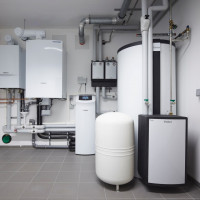 Requirements for the ventilation of a gas boiler: standards and features of the system assembly
Requirements for the ventilation of a gas boiler: standards and features of the system assembly  Norms of air exchange rate in various rooms + calculation examples
Norms of air exchange rate in various rooms + calculation examples 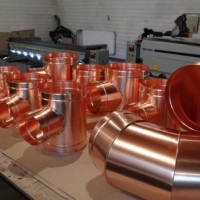 Calculation of the area of ducts and fittings: rules for performing calculations + examples of calculations by formulas
Calculation of the area of ducts and fittings: rules for performing calculations + examples of calculations by formulas 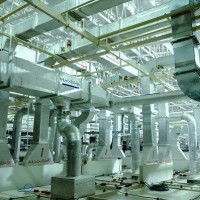 Requirements for ventilation of public buildings: subtleties of arrangement and design of ventilation
Requirements for ventilation of public buildings: subtleties of arrangement and design of ventilation 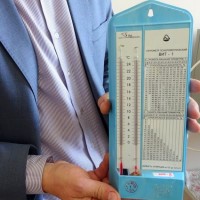 How to calculate humidity on a hygrometer: a manual for the use of devices + calculation examples
How to calculate humidity on a hygrometer: a manual for the use of devices + calculation examples 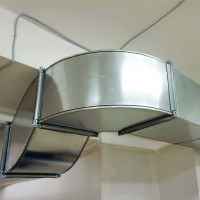 Duct mounting distance standards: calculation of the geometric data of the ventilation route
Duct mounting distance standards: calculation of the geometric data of the ventilation route  How much does it cost to connect gas to a private house: the price of organizing gas supply
How much does it cost to connect gas to a private house: the price of organizing gas supply  The best washing machines with dryer: model rating and customer tips
The best washing machines with dryer: model rating and customer tips  What is the color temperature of light and the nuances of choosing the temperature of the lamps to suit your needs
What is the color temperature of light and the nuances of choosing the temperature of the lamps to suit your needs  Replacement of a geyser in an apartment: replacement paperwork + basic norms and requirements
Replacement of a geyser in an apartment: replacement paperwork + basic norms and requirements